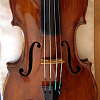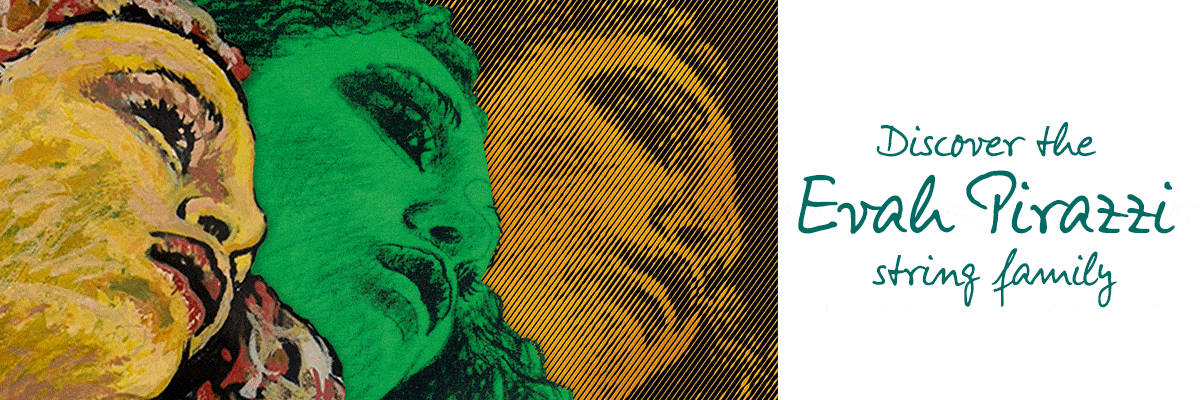
August 2008
V.com weekend vote: Have you ever faked it?
August 29, 2008 22:44Well, the news is in from Sydney: little Lin Miaoke is not the only Olympic faker, apparently the entire Sydney Symphony was simply miming along to a recording -- mostly of another orchestra -- during the 2000 Olympics.
Was the Melbourne Symphony Orchestra not cute enough?
It begs the question: Have you ever.....faked it?
It's actually not SUCH an unusual practice in outdoor settings and/or high-production shows. I can remember when I was in the Disney college orchestra one summer (I think I just won't add the year, here), we had a group of dancers that performed with us, and allegedly, sang. Actually the conductor had a click-track in his ear, which helped us to sync up our live playing with the pre-recorded "singing." It allowed us to have consistency in the show, night after night, and it let the dancers do their thing, which was not really singing -- I'm pretty sure that none of their voices were the ones recorded.
Is this wrong? Is it art? Well, it's entertainment.
Sometimes we are asked to "fake it," like the musicians in Sydney. Hey, the check still cashes. And sometimes people have a lot of fun, spending the day as an "extra" for a movie, in which they "fake it" for the movies. After all, real musicians make the best fakers. For example, can anyone spot the problems here with having an actress faking the fiddle?
Now, I haven't even gotten into whether or not any of you have faked some of those 16th notes in the middlemost sections of the 1812 Overture while sight-reading the Fourth of July concert, etc.
So now. Be honest and answer the question. Then, let's hear your views on "faking it" and also your funny stories.
V.com weekend vote: How do you like your Tchaik?
August 22, 2008 13:49Well, since Andrew Sords suggested it in a discussion thread earlier this week, I just couldn't resist.
First, a little background: Tchaikovsky wrote his famous violin concerto in 1878, and when he offered it to the great violinist Leopold Auer, the violinist famously rejected it as "unplayable." The concerto was premiered three years later in Vienna, by Adolf Brodsky.
Auer eventually changed his mind about the concerto and became one of its biggest champions. He also revised it, and his revisions are what we are talking about today. There are small edits throughout the piece, but I'd like to focus on just two of the most obvious and bigger ones: one in the first movement and one in the last.
In the first movement, (after letter E, if you have your score), Auer wrote a double-stop scale lick to replace Tchaikovsky's barriolage passage. Here is an example of David Oistrakh playing the first movement with Tchaikovsky's original barriolage, which occurs 6:45 minutes in. Here is an example of Jascha Heifetz playing the first movement, with the Auer double stops in said passage, which occurs 5:09 minutes in.
In the third movement, towards the beginning, is the "tastefully repetitive" passage or the "broken record" passage, depending on how you look at it. Here is an example of Maxim Vengerov playing the third movement with the original Tchaikovsky repetitions, which occur 59 seconds into this recording. Here is an example of our very own Jessica Hung playing the third movement, with the Auer cuts, which occur 56 seconds in. (And by the way today on V.com "Concert Clips" we're featuring Judith Ingolfsson who does to the original Tchaik in the third movement. Beautiful playing!)
I listened to a few of my recordings, and made notes on who did and didn't do the aforementioned Auer cuts in the first movement, and in the third. Here are the results:
David Oistrakh, All-Union Radio Orchesta, 1939:
First movement: Auer double stops at letter E
Third movement: Auer cut, no repeats
Jascha Heifetz, Chicago Symphony Orchestra, Reiner, 1957:
First movement: Auer double stops at letter E
Third movement: Auer cuts, no repeats
Joshua Bell, Cleveland Orchestra, Ashkenazy, 1988:
First movement: Tchaik barriolage at letter E
Third movement: Auer cuts, no repeats
Gil Shaham, Philharmonia Orchestra, Sinopoli, 1993:
First movement: Tchaikovsky barriolage at letter E
Third movement: Tchaikovsky repeats
Maxim Vengerov, Berliner Philharmoniker, Abbado, 1995:
First movement: Tchaikovsky barriolage at letter E
Third movement: Tchaikovsky repeats
How do you play it, or which do you prefer? Have your tastes or opinions changed on this matter over the years? Tell us about it!
V.com weekend vote: Who is in your violin family tree?
August 15, 2008 17:12I'd like to test my hypothesis: Seems like if you can make a connection to Ivan Galamian, Josef Gingold or Dorothy DeLay, you can connect with just about any violinist on the planet.
I was observing this while thinking about Kevin Bacon, degrees of separation, and Six Degrees of Simon Fischer.
So my question is, are you directly connected to any of these Big Three teachers, through one of your teachers? What is your "Teacher Tree"? If you don't know your violinistic lineage, you should check into it. Just like Great-Great Grandpa Günther, whom you never saw or knew, gave you that enormous nose, taste for bratwurst and ability to tie a cherry stem in a knot with your tongue, your musical predecessors likely continue to offer techniques, philosophies, interpretations and attitudes toward the art of violin playing, through the way you learned (or are learning) from your teacher.
Here are my own incomplete and unscientific observations about the Big Three: When I think of Ivan Galamian, who taught several of my teachers, I think of a technical approach, developing the left side of the brain, working with permutations of rhythm, bowings, etc. for practice. For Josef Gingold, who was still at Indiana when I went there and influenced all the teachers there, I think of an attention to beautiful tone, a kind, nurturing but demanding teaching approach, expression, and fidelity to the composer's intentions. For Dorothy DeLay, I think of nurturing musical independence and attending to basics, even at the highest level.
Though Dorothy DeLay was Galamian's assistant, I'm going to count her as her own entity. That's another thing that you guys can argue with me about down below ;)
Now I know that these three teacher's aren't in everyone's lineage, so if your teacher traces back to another influence, please mark "none of the above" and tell us below in the comment section about your teacher's major influences.
I'm going to make some rules for this: Your family tree includes only teachers you've studied with (and paid for lessons, either directly or through school tuition) for at least a year, and people they'd studied with for at least a year. You can't claim a connection through one lesson, a week at an institute, or through your hairdresser or the guy next to you on the plane!
Also, you may have had all three in the tree; so it's okay to mark more than one.
V.com weekend vote: Which 'Olympian' feat would you want in the Violin Games?
August 9, 2008 15:06The brilliant opening ceremonies for the 2008 Beijing Olympics got me thinking about over-the-top, gargantuan feats, for some reason.
I wondered, what would the events be in the Violin Games?

I'm thinking that the Violin Games (V.G.) would take place over the course of a week, so all events would have to take place in that time. The time element is part of the challenge, I'd say, with the V.G.
One event would certainly have to involve playing all 24 Paganini Caprices, as in having them in hand and performing them all for an audience. And then, there's playing the Bach Sonatas and Partitas, but I thought it would actually be harder to record those then to play them live. Why? Because in recording them, you'd be casting them for the record; your decisions would have to have a certain non-spontaneous finality. Making final decisions regarding Bach (deciding how to play it "right") to me is every bit as hard as just physically doing it.
Then I thought I'd throw in a teacher event: leading a group of students through all 10 Suzuki violin books. But the teacher has to play every bit of it by memory, no cheating! Recall the Handel Sonatas, the Bach concerto, weird arrangements of other pieces, two Mozart concerti and a whole lot of little short pieces that need to follow certain bowings.
Then, for the orchestral musician, how about a little Richard Strauss: playing Don Juan, Tod und Verklärung, Till Eulenspiegel, Zarathustra, Don Quixote, and Ein Heldenleben all in one marathon concert? (I actually played in a concert where the orchestra did three of those works. It was ridiculous. Insane!) And if, instead, you'd prefer the opera pit, I threw in a complete performance of The Ring cycle.
But what if you are a historian? How about reading all 20 volumes of the Grove's Encyclopedia of Music and Musicans? And for you theory buffs, your task is to pore over the score of Lulu and find every tone row or inversion thereof. (It's not in strict serial form, so bring your eyeglasses.)
So which event will you be participating in, or following? And if you have more ideas for Olympian violinistic feats (or just hellish torture), please describe below. And of course, if you have actually completed one of these tasks (as mortals occasionally do), please do share!
V.com weekend vote: do you play, own or love a 'funky fiddle'?
August 1, 2008 17:18Rachel Barton-Pine has me thinking about "funky fiddles."
She mentioned quite a few of them in her interview with Violinist.com this week; in fact she said she aspires to own every kind of stringed instrument played with a bow and held with the arm.
I did a little research, and er, Rachel, this goal might involve a bit of travel and also some serious dinero. Check it out! I'm not even beginning to list them all, but I did compile a list of links to inform you about a few of the most "common" such instruments, just in case you see a few unfamiliar names in here:
BTW making that list of links made me completely bug-eyed, even if most of them come from wikipedia...=8-I
What I'm asking, here is: have you ever in your life encountered any of these instruments in any way? Have you played one? Heard one? Did you pick one up in your travels and now have it in your studio or on your wall? Is one of these instruments part of your family? And if you say yes, please tell us below what this instrument sounds like, where you got it, what it means to you, what makes it interesting, etc.
More entries: September 2008 • July 2008
Violinist.com is made possible by...
Dimitri Musafia, Master Maker of Violin and Viola Cases
Johnson String Instrument/Carriage House Violins
Subscribe
Laurie's Books
Discover the best of Violinist.com in these collections of editor Laurie Niles' exclusive interviews.

Violinist.com Interviews Volume 1, with introduction by Hilary Hahn

Violinist.com Interviews Volume 2, with introduction by Rachel Barton Pine






